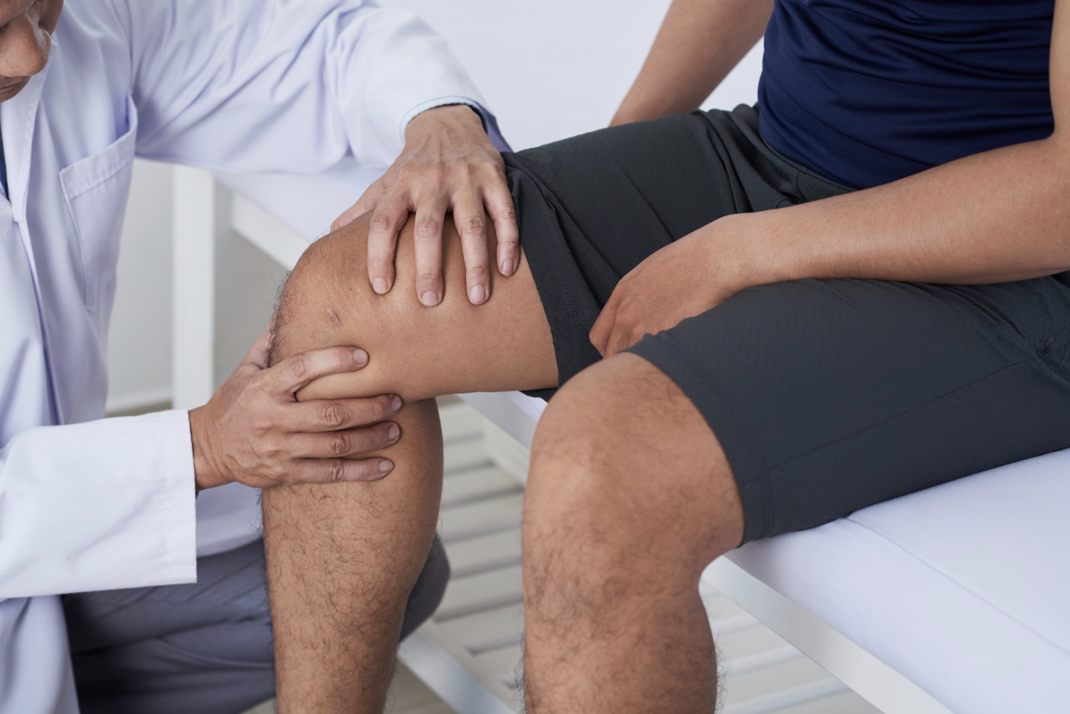Knee Injection Options to Treat Osteoarthritis
January 13, 2022
Osteoarthritis affects more than 32 million adults. Fourteen million of these people suffer specifically from osteoarthritis of the knee and suffer from symptoms like pain, swelling, stiffness, and decreased mobility. Luckily there are many treatments for this common joint disorder, especially with advances in therapeutic injections.
Therapeutic Injections and Recovery
Your doctor may recommend therapeutic injections to help you with osteoarthritis of the knee. We’ll cover each one and how they work briefly to help you learn more about each course of treatment. If you have questions, talk to your doctor about which therapeutic injections may best suit your needs.
- Corticosteroid Injection – Corticosteroid injections are one of the most administered therapeutic injections today. They have been used safely for over 50 years and have very few risks or side effects. During the process, a corticosteroid injection is placed in the joint of the knee. The steroid takes effect within a few days and may alleviate pain for some people. This relief, if effective, can last for weeks or even months, varying for each patient. With spacing of repeat injections no more frequent than every 3-4 months, the progression of the arthritis continues to be slow.
- Hyaluronic Acid Injection – Also called viscosupplementation treatment, hyaluronic acid injections may help alleviate osteoarthritis of the knee. The injection of hyaluronic acid is designed to improve the lubrication effect of the knee’s joint fluid. An injection of this type sometimes temporarily improves the knee’s gliding motion—leading to pain relief for months at a time. These injections are approved for payment by Medicare and most commercial insurance plans.
- Platelet-Rich Plasma Injections – You may have seen advertisements for a new substance, commonly abbreviated as PRP Injections. Platelet-rich plasma is believed by some to aid the body’s natural healing processes. A physician will collect blood from your arm and then separate a small portion of the blood into microscopic parts called platelets using a spinning device called a centrifuge. Then these platelets are injected into an affected area such as an arthritic joint. Your body’s platelets play a role in the healing process of inflamed and damaged tissues; by injecting more platelets into your knee, some believe that there is a healing effect that can reduce pain. Literally hundreds of research articles have been published related to PRP and the best science does not support its use for knee arthritis. For this reason, Medicare and almost all commercial insurance DO NOT pay for these treatments that are considered, “experimental.” Patients are generally asked to pay in advance for this kind of knee injection.
- Stem Cell Injections – Stem cells are another kind of biologic attempt to treat those with osteoarthritis. Your own body’s stem cells are found in the center of bones and have the ability to transition into other types of cells, including joint cartilage cells. Stem cells are also obtained through harvesting of discarded tissues from childbirth such as the placenta. It was hoped that the transfer of stem cells into arthritic joints would result in the formation or regrowth of the damaged cartilage. To date, this procedure has not been successful and the Federal Food and Drug Administration (FDA) has started to fine entities that are falsely claiming that using stem cells is beneficial. Because this technology is not authorized, Medicare and commercial insurance plans do NOT pay for its use. Individuals should view with skepticism any claims that stem cell injections will cure or reduce arthritis.
WARNING-Because PRP and Stem Cell injections are not approved for payment, many unscrupulous individuals will advertise that they are providing “cutting edge” or “the latest” treatment options for osteoarthritis. Neither PRP or Stem Cell injections are “new” and they have been used experimentally for over a decade. If bona fide science could prove that these substances were in fact beneficial, their use would be encouraged and payment would be provided by Medicare and commercial health insurance. While some studies have in fact shown that patients will report less pain following their use, the same studies also show that persons that receive injections of sterile salt water also report decreased pain. There is something very powerful about receiving an injection that appears to contribute to this phenomenon that is still not completely understood.
Working with a Physician
With so many therapeutic injections, you may be wondering which solution is best for your condition. If you have osteoarthritis of the knee or any similar disorder, you should consult a board certified orthopedic surgeon.
The Bone and Joint Center of Yuma is perfect for those considering therapeutic injections. If you’d like to speak to an expert about how we can help you live an active life again, contact us now.